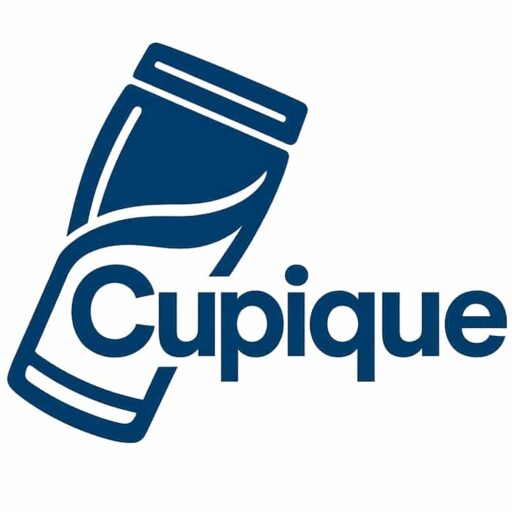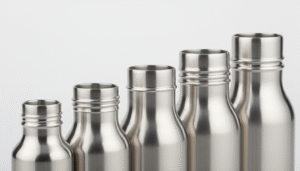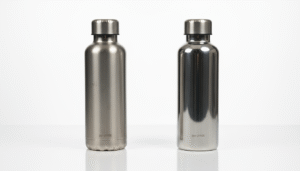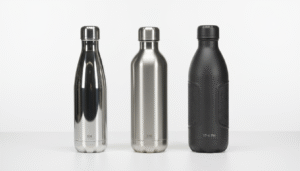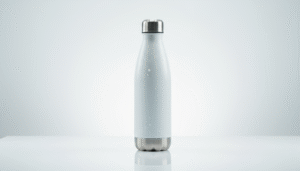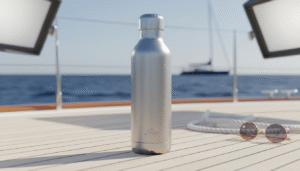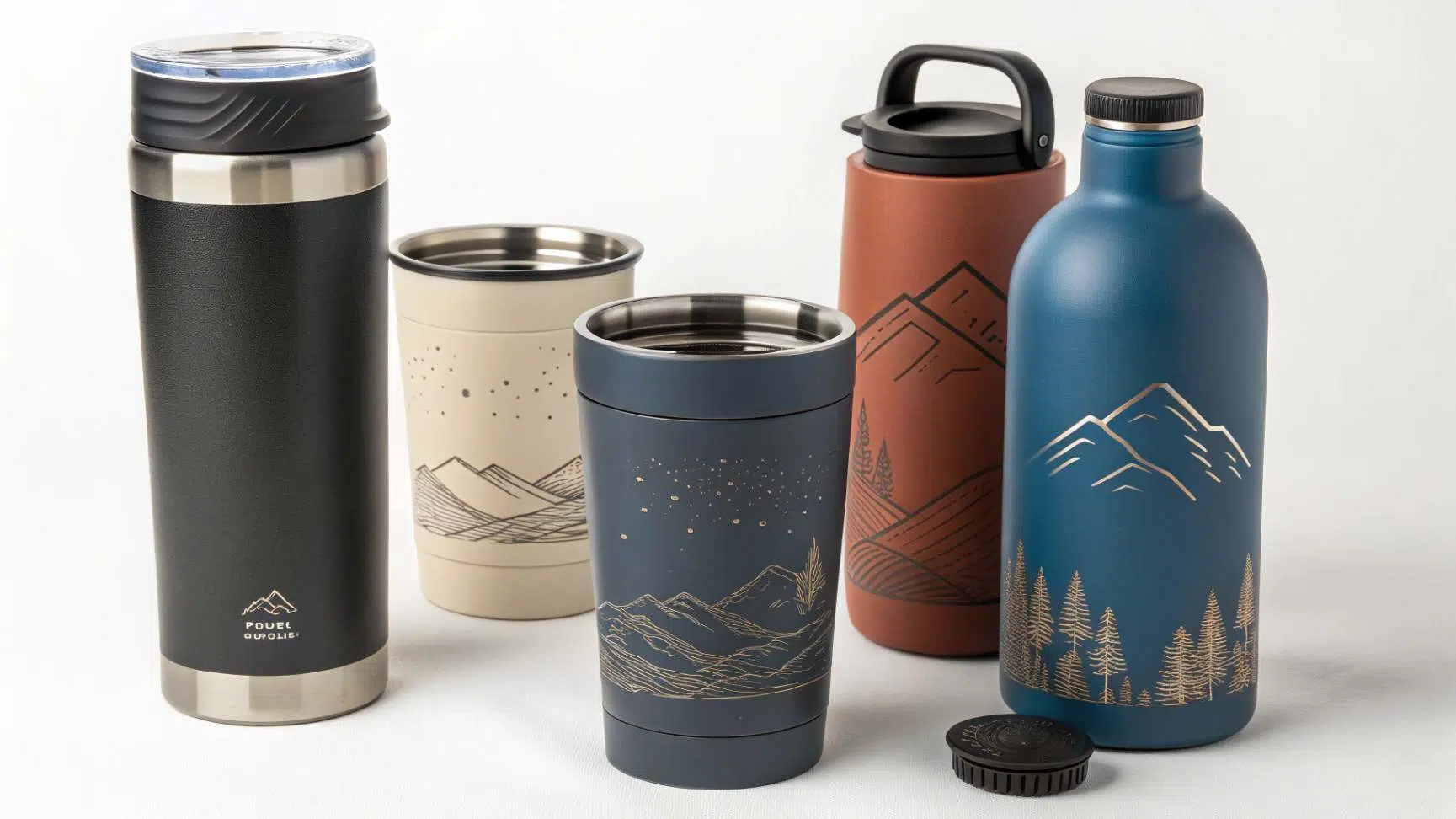
The "best" insulated cup doesn't exist. The "right" insulated cup for your specific target market and price point does. Success in B2B sourcing comes from understanding the trinity of insulation performance: vacuum quality, lid engineering, and copper plating.
This guide will help you move beyond generic product descriptions and focus on the technical factors that actually determine performance and profitability.
The 'best' insulated cup depends on the target market and price point.True
The section states that the 'best' insulated cup doesn't exist, but the 'right' cup for a specific market and price point does.
All insulated cups have the same insulation performance.False
The section states that success in sourcing depends on understanding the three key factors of insulation performance.
What insulated cups are the best
The question assumes there's a universal "best" cup, but that's a costly misconception that leads to wrong sourcing decisions.
The best insulated cup is the one that perfectly matches your target market's needs and budget. A $50 outdoor enthusiast cup and a $5 promotional giveaway serve completely different purposes.
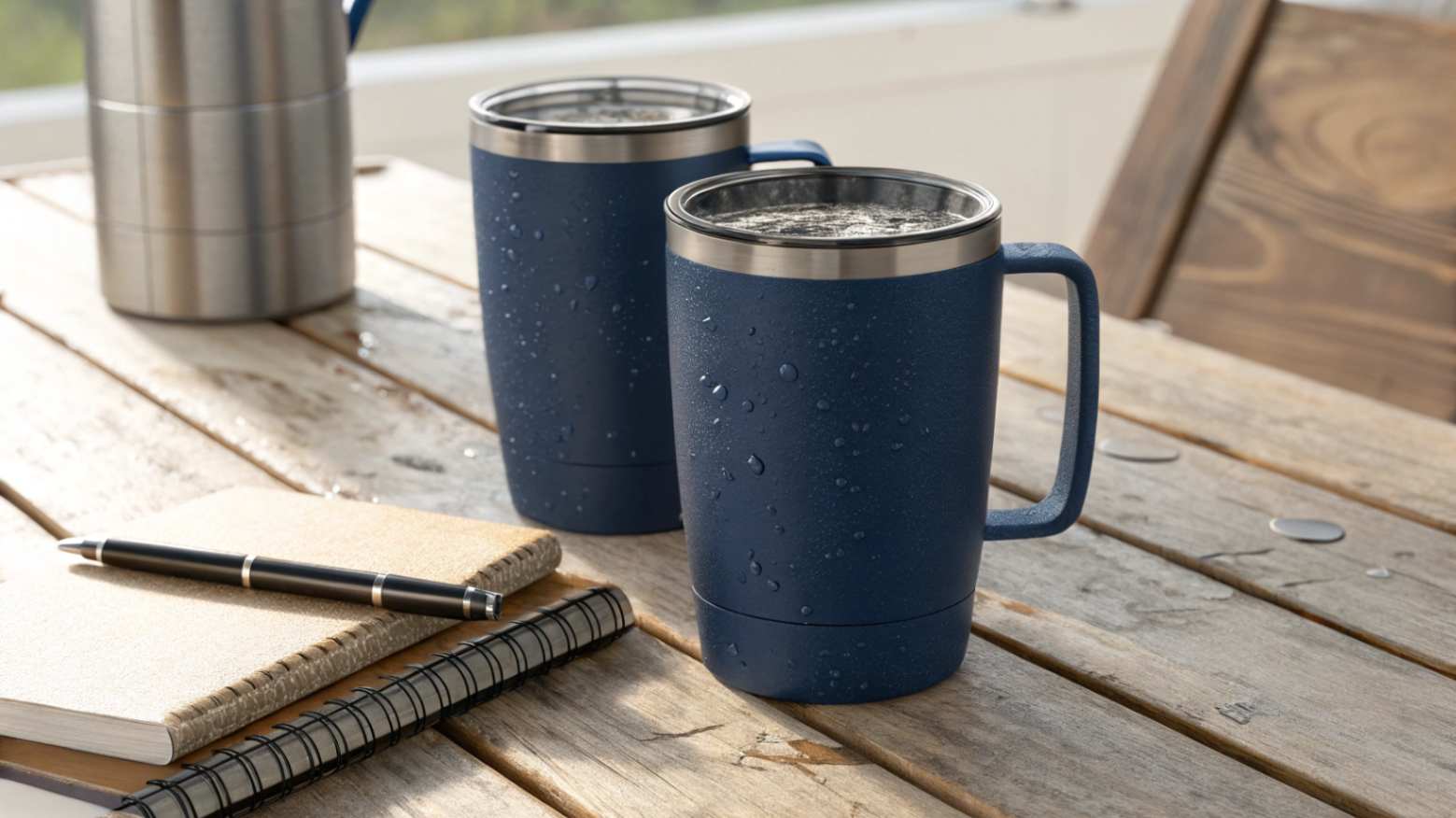
The Strategic Approach to "Best"
I work with three distinct market segments, each requiring different performance standards:
High-End Outdoor Market
This segment needs maximum performance. They expect 18-24 hours of heat retention and will pay premium prices for it.
| Feature | Requirement | Impact on Cost |
|---|---|---|
| Steel Grade | 316 stainless steel | +15-20% |
| Vacuum Quality | Near-perfect with gettering | +25-30% |
| Lid Type | Fully sealed screw-top | +10-15% |
| Coating | Advanced powder coating | +5-10% |
Corporate Promotional Market
This segment prioritizes brandability and cost-effectiveness. They need 6-8 hours of insulation, which is more than enough for office use.
| Feature | Requirement | Cost Benefit |
|---|---|---|
| Steel Grade | 304 stainless steel | Base cost |
| Vacuum Quality | Standard vacuum | Standard |
| Lid Type | Simple snap lid | -20% vs screw-top |
| Coating | Basic powder coat with good printing surface | Minimal premium |
Lifestyle Consumer Market
This segment wants convenience and style. They need moderate performance with excellent daily usability.
The key insight is this: the most successful importers don't chase the highest performance specs. They match specifications to their market's actual needs and willingness to pay.
Which type of cup provides the best insulation
The answer lies in understanding the trinity of insulation performance: vacuum quality, lid engineering, and inner wall treatments.
Double-wall vacuum cups with proper gettering, engineered lids, and copper plating provide the best insulation. However, each component must be optimized for your specific performance targets.
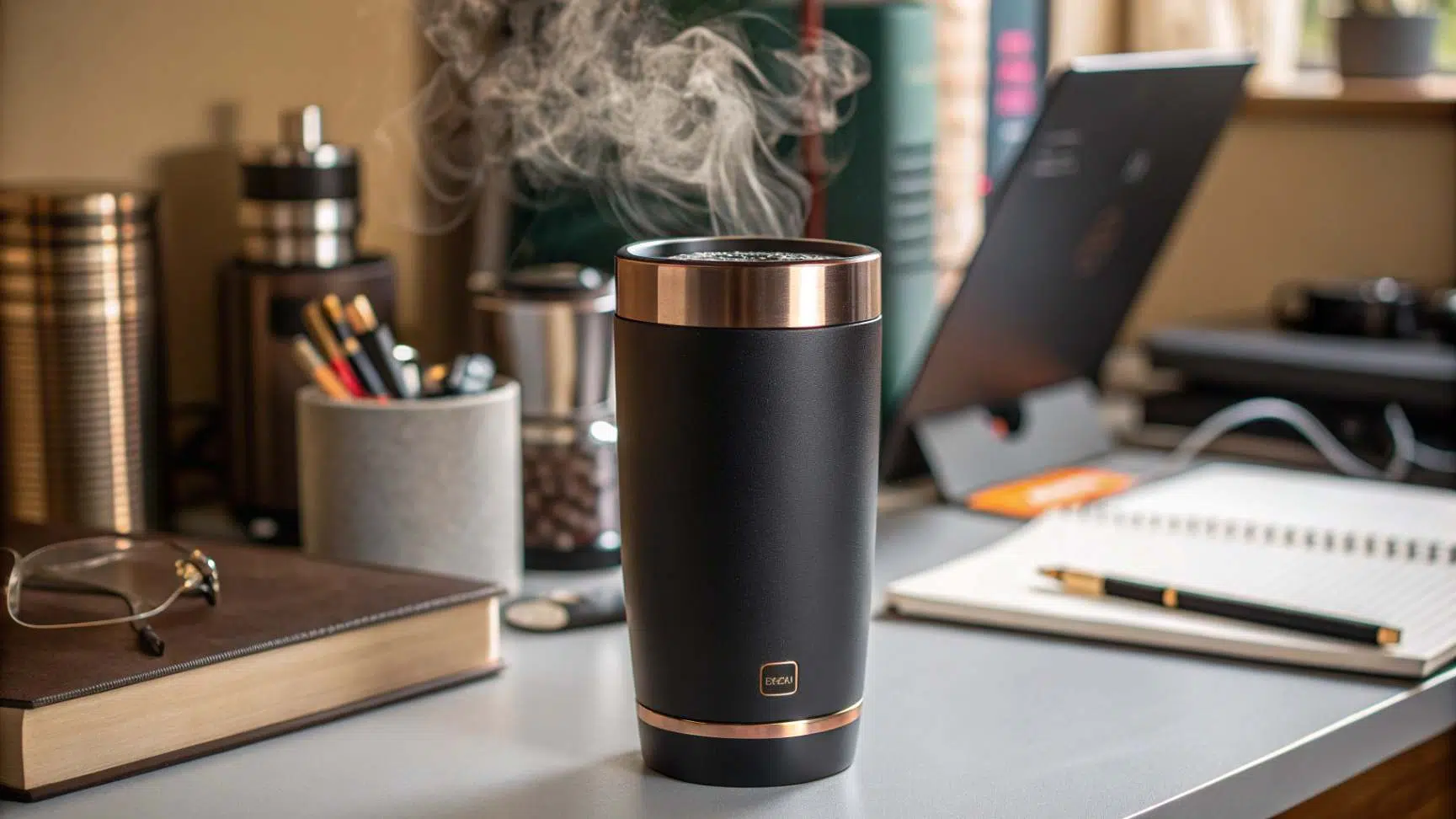
The Trinity of Insulation Performance
Vacuum Quality: The Foundation
The vacuum between walls is everything. I've seen factories rush the gettering process to meet deadlines, resulting in 30-40% performance variation between batches.
Gettering involves placing special materials inside the vacuum space that absorb residual gas molecules after sealing. Quality factories test 100% of units. Budget factories test samples only.
When sourcing, ask these specific questions:
- Do you test vacuum quality on every unit or just samples?
- What is your gettering material and process time?
- What's your acceptable vacuum level threshold?
Lid Engineering: The Weak Link
Heat escapes primarily through the lid, not the walls. The lid design determines whether you get 6 hours or 18 hours of performance.
| Lid Type | Heat Retention | Use Case |
|---|---|---|
| Fully sealed screw-top | 18-24 hours | Outdoor, travel |
| Partial seal flip-top | 12-16 hours | Office, car |
| Simple slider | 6-8 hours | Quick access |
The best strategy for B2B is offering interchangeable lids. Customers get a sealed lid for transport and a convenience lid for use.
Copper Plating: The Performance Booster
A thin copper layer on the outside of the inner wall reduces thermal radiation. This isn't marketing fluff - it improves performance by 10-15%.
Quality-oriented manufacturers include this step. Budget manufacturers skip it to save costs. When sourcing, specifically ask if copper plating is included.
Double-wall vacuum cups with proper components provide the best insulationTrue
The section states that double-wall vacuum cups with proper gettering, engineered lids, and copper plating provide the best insulation.
Any type of cup can provide the best insulationFalse
The section clearly states that specific components like vacuum quality, lid engineering, and inner wall treatments are required for the best insulation performance.
How to make the best insulated cup
Making the best insulated cup requires controlling three critical manufacturing processes that most buyers never discuss with suppliers.
The best insulated cups come from manufacturers who excel at vacuum creation, precision welding, and quality testing. These processes determine whether your product performs consistently or fails in the field.

Critical Manufacturing Processes
Vacuum Creation and Gettering
The vacuum creation process happens in stages. First, air is mechanically pumped out. Then, the cup is heated while under vacuum to release trapped gases from the steel itself.
The gettering step is crucial but often rushed. Gettering materials absorb residual gases over 24-48 hours after sealing. Factories under pressure sometimes reduce this time, compromising long-term performance.
At our factory, we use automated vacuum testing on every single unit. The test takes 30 seconds per cup but ensures consistent performance. Budget factories test 1 in 100 units to save time.
Precision Welding Technology
The weld seam where the cup is sealed determines durability. Laser welding creates stronger, more precise seals than traditional methods.
| Welding Method | Seal Quality | Failure Rate | Cost Impact |
|---|---|---|---|
| Laser welding | Excellent | <0.1% | +8-12% |
| TIG welding | Good | 0.3-0.5% | Standard |
| Basic welding | Variable | 1-2% | -5-8% |
Poor welding leads to microscopic failures that cause slow vacuum loss. This shows up as customer complaints 6-12 months after purchase.
Multi-Stage Quality Testing
Quality manufacturers test at multiple stages:
- Raw Material Testing: Steel composition and thickness
- Pre-Vacuum Testing: Cup integrity before vacuum creation
- Post-Vacuum Testing: Vacuum level verification
- Final Performance Testing: Actual thermal retention measurement
Budget manufacturers skip stages 2 and 4 to reduce costs and time. This creates quality variation that damages brand reputation.
The key insight: the "best" cup comes from manufacturers who invest in process control, not just equipment. When evaluating suppliers, ask to see their testing protocols and failure rate data.
The best insulated cups require precision manufacturing processes.True
The article states that vacuum creation, precision welding, and quality testing are critical processes for making the best insulated cups.
Buyers routinely discuss manufacturing processes with suppliers.False
The article states that most buyers never discuss these critical manufacturing processes with suppliers.
Why do insulated cups stop working
Insulated cups fail for one primary reason: loss of vacuum due to seal compromise or physical damage to the double-wall structure.
When the vacuum between walls is lost, air enters the space and heat transfers through convection. This instantly reduces insulation performance by 80-90%, making the cup feel like a regular single-wall container.
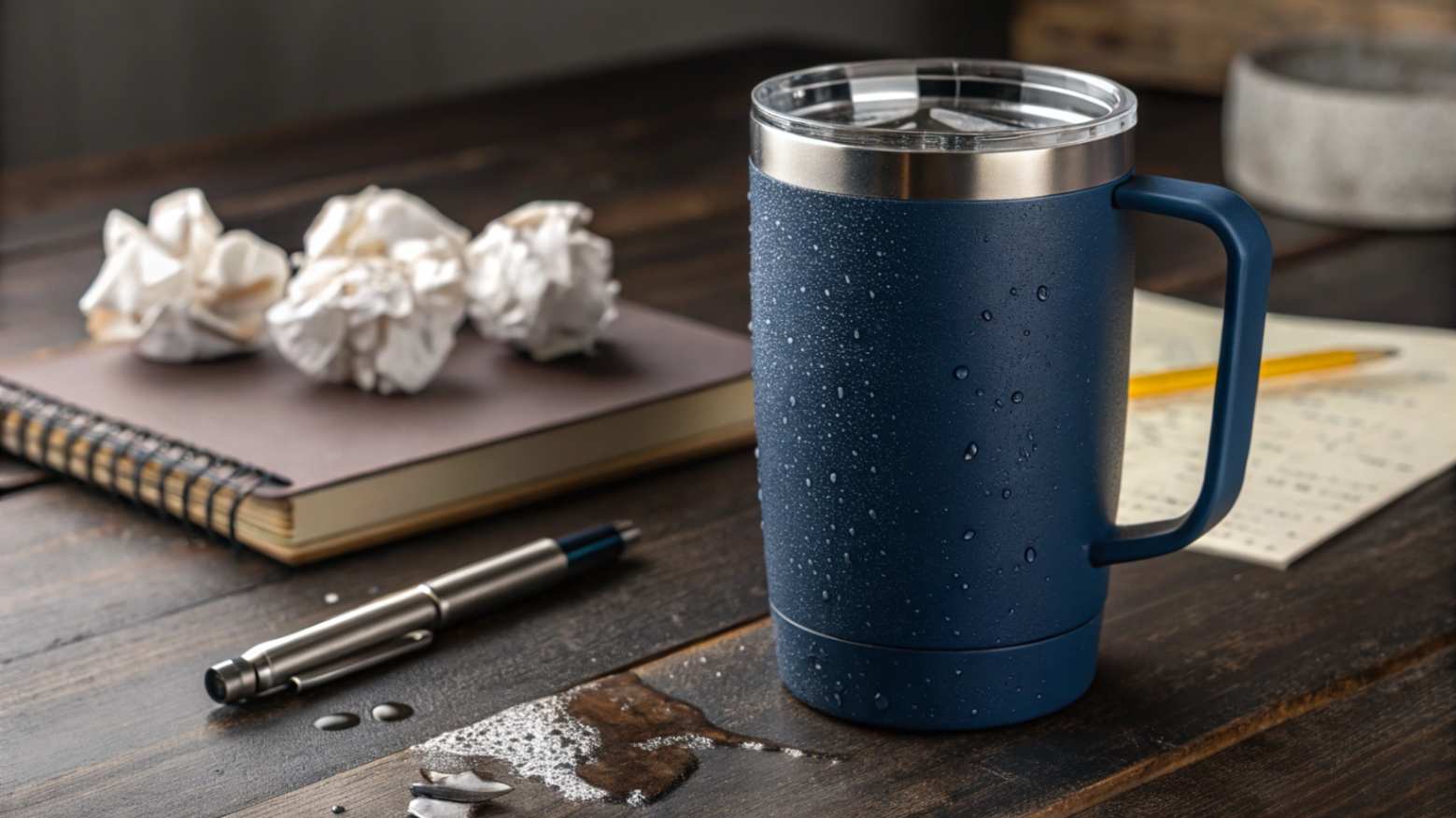
Primary Failure Modes
Physical Damage: The Thermal Bridge
A significant dent that forces the outer wall to touch the inner wall creates a "thermal bridge." Heat now has a direct path between the walls, bypassing the vacuum entirely.
This is why premium outdoor cups use thicker steel and protective coatings. The extra material cost prevents field failures that destroy brand reputation.
Manufacturing Defects: The Slow Leak
Microscopic failures in the weld seam or sealing point cause slow vacuum loss over months. This is the most dangerous failure mode because it's not immediately obvious.
Customers notice reduced performance gradually and blame the product design rather than manufacturing quality. This leads to negative reviews and lost repeat business.
Quality Control Prevention
Weld Seam Integrity
Quality manufacturers use helium leak testing to detect microscopic seal failures before shipping. Helium molecules are smaller than air molecules, so if helium can't escape, air can't enter.
At our facility, every cup goes through helium testing. Budget manufacturers skip this step because it adds 2-3 minutes per unit and requires expensive equipment.
Stress Testing Protocol
Premium manufacturers subject samples to drop tests, temperature cycling, and pressure testing to identify potential failure points.
| Test Type | Purpose | Quality Threshold |
|---|---|---|
| Drop test | Impact resistance | No vacuum loss after 1m drop |
| Temperature cycling | Seal integrity | -20°C to 80°C, 50 cycles |
| Pressure test | Weld strength | 2x normal pressure, no leaks |
Field Failure Analysis
The best manufacturers track field failures and modify processes based on real-world data. They maintain failure rates below 0.5% across all products.
When sourcing, ask suppliers for their field failure rates and what process improvements they've made based on customer feedback. Quality-focused manufacturers will have detailed answers.
Insulated cups fail due to loss of vacuum insulationTrue
The article states that insulated cups fail primarily due to loss of the vacuum between the walls.
Insulated cups fail due to damage to the inner liningFalse
The article does not mention damage to the inner lining as a cause of failure for insulated cups.
What are three common uses for insulated cups
The three primary use cases represent distinct market opportunities that require different design priorities and specifications.
Corporate promotional products, outdoor adventure gear, and lifestyle convenience items each demand specific features. Success comes from matching cup specifications to the exact needs of each market segment.

Market Segment Analysis
Corporate & Promotional Market
This segment values aesthetics and brandability above extreme performance. The cup serves as a physical brand ambassador that recipients use daily.
Key requirements include smooth surfaces for high-quality printing, moderate insulation (6-8 hours is sufficient for office use), and cost-effectiveness for large orders.
Surface finish is critical. UV printing and laser engraving require specific coating types. Standard powder coating works for basic logos, but specialized finishes enable photo-quality branding.
| Feature Priority | Specification | Business Impact |
|---|---|---|
| Surface finish | UV-printable coating | Enables premium branding |
| Insulation time | 6-8 hours | Adequate for office use |
| Cost target | $3-6 wholesale | Allows reasonable margins |
| Minimum order | 500-1000 units | Manageable for campaigns |
Outdoor & Fitness Market
This segment demands maximum performance and durability. Customers use these cups in extreme conditions and expect them to perform reliably.
316 stainless steel resists corrosion from sports drinks and saltwater. Rugged powder coatings prevent chipping during outdoor activities. Leak-proof lids with secure locking mechanisms are essential.
The key differentiator is engineering for abuse. These cups must survive drops, temperature extremes, and daily heavy use while maintaining performance.
Home & Office Lifestyle Market
This segment prioritizes daily convenience and style integration. Extreme performance matters less than fitting seamlessly into busy lifestyles.
Features like non-slip silicone bases prevent desk accidents. Splash-proof lids work for commuting. Car cup holder compatibility is essential. Wide color ranges allow personal expression.
The design philosophy is "invisible excellence" - the cup should work perfectly without requiring thought or special handling.
Strategic Positioning
Each market segment requires different supplier capabilities:
Corporate Market: Focus on printing/engraving partnerships and flexible MOQs
Outdoor Market: Emphasize testing certifications and material upgrades
Lifestyle Market: Highlight design variety and convenience features
The most successful B2B buyers don't try to serve all three segments with one product. They develop specific SKUs optimized for each market's priorities and price sensitivity.
Understanding these distinctions helps you select the right factory partners and avoid the common mistake of over-engineering products for price-sensitive markets or under-engineering for performance-critical applications.
Insulated cups have three common uses with distinct design requirementsTrue
The section states that corporate, outdoor, and lifestyle uses require different cup designs and specifications.
Insulated cups are primarily used for corporate promotionsFalse
The section lists three common uses, not just corporate promotions.
Conclusion
The "best" insulated cup is a strategic choice that balances performance, market needs, and price points rather than pursuing maximum specifications.
